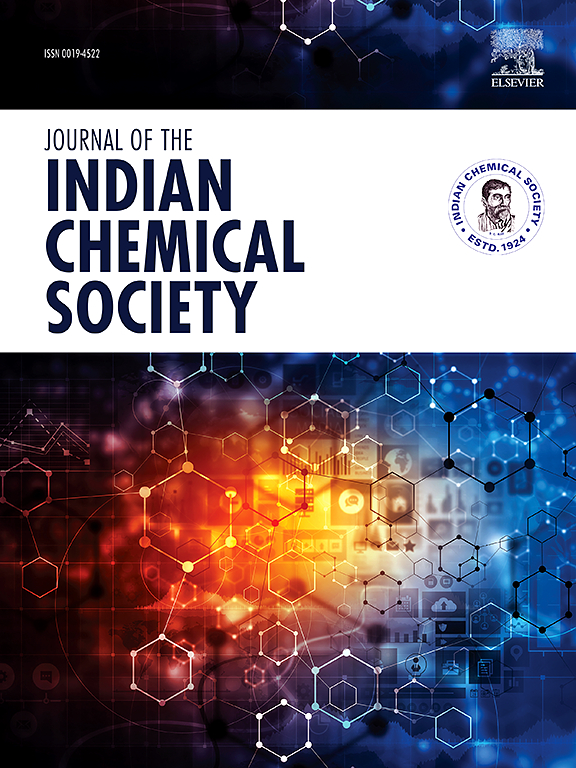Design and optimization of Ag decorated MgO nanosphere catalyst for efficient removal of textile industry pollutants and their biological applications
IF 3.2
4区 化学
Q2 CHEMISTRY, MULTIDISCIPLINARY
引用次数: 0
Abstract
This study presents the biogenic synthesis of phytochemical-enriched magnesium oxide nanoparticles (MgO NPs) using Eucalyptus globulus leaf extract and silver-doped nanocomposites (MgO–Ag NCs) at varying silver concentrations (0.1, 0.3, and 0.5 mM). Comprehensive physicochemical analyses were conducted to evaluate the influence of silver incorporation on the properties of MgO NPs. The doping of Ag in MgO increased crystalline size from 38 nm to 44 nm without introducing an Ag-specific structural phase, suggesting the successful incorporation of Ag into the MgO lattice. Optical studies revealed a notable reduction in the bandgap, decreasing from 4.7 eV for pure MgO to 3.61 eV at higher Ag concentrations suitable for photocatalytic activity. The photocatalytic analysis demonstrated exceptional dye degradation efficiencies, with MgO–Ag NCs achieving 100 % Malachite Green (MG) and 97.9 % degradation of Congo Red (CR) degradation. Scavenging activity analyses provided insights into the degradation pathways facilitated by the nanocomposites. Additionally, the antibacterial efficacy of MgO–Ag NCs showed significant improvement, with zones of inhibition increasing from 13 mm for pure MgO to 21 mm for Ag-doped MgO against Staphylococcus aureus and from 9 mm to 18 mm against Escherichia coli. These findings highlight that Ag doping profoundly enhances the physicochemical properties, photocatalytic performance, and antibacterial activity of MgO NPs, underscoring their potential for applications in environmental remediation and biomedical fields.

求助全文
约1分钟内获得全文
求助全文
来源期刊
CiteScore
3.50
自引率
7.70%
发文量
492
审稿时长
3-8 weeks
期刊介绍:
The Journal of the Indian Chemical Society publishes original, fundamental, theorical, experimental research work of highest quality in all areas of chemistry, biochemistry, medicinal chemistry, electrochemistry, agrochemistry, chemical engineering and technology, food chemistry, environmental chemistry, etc.

 求助内容:
求助内容: 应助结果提醒方式:
应助结果提醒方式:


